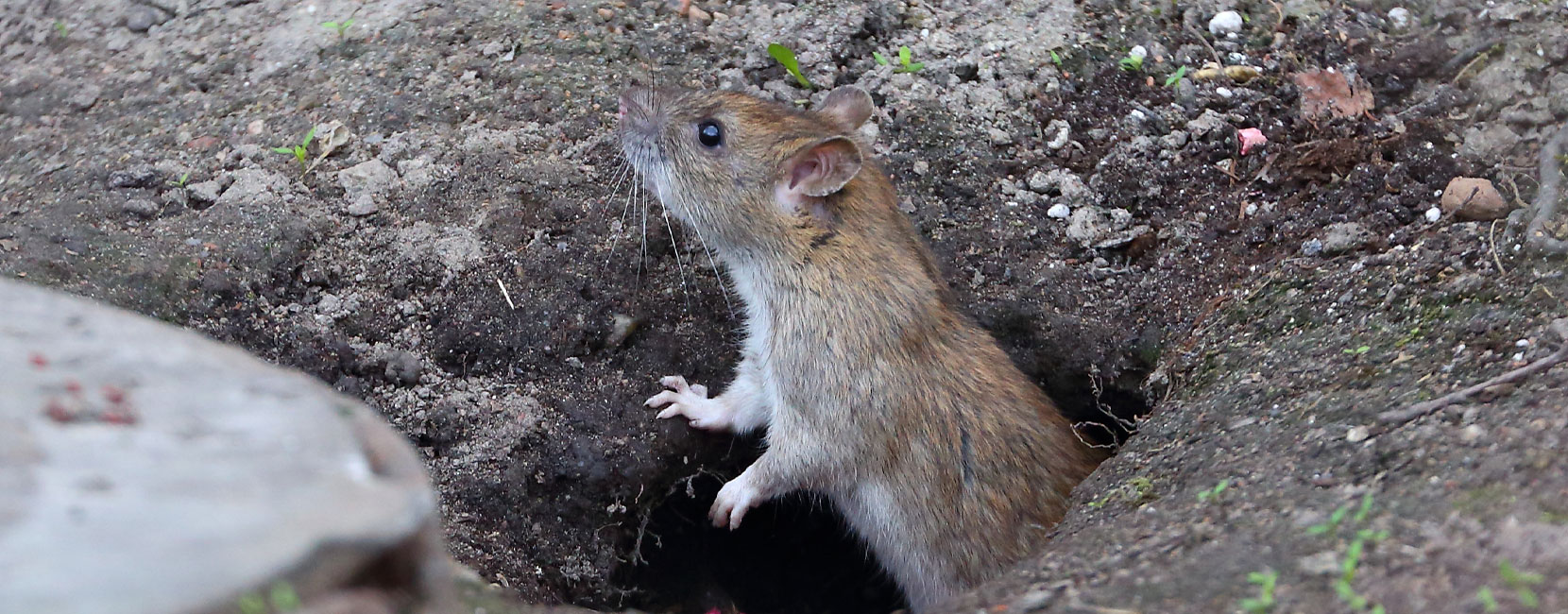
How To Get Rid of Squirrels in the Attic
Squirrels nesting in your attic can cause extensive damage. Initially, you may hear a slight scurrying sound above you as you lay in bed at night. You may see a busy little squirrel running along the gutter then disappear. At first, it may seem cute that squirrels are using your home to raise and protect their babies, but left unchecked, squirrels can cause a lot of damage to your home.
There are over 50 species of squirrels in the United States. Perhaps squirrels are best known for their clever and relentless attempts to break into birdfeeders. Squirrels frustrate bird lovers across this country every day. There are many innovative products designed to keep squirrels from eating bird seed, but squirrels do more than frustrate homeowners when they nest indoors; they cause actual damage.
The most common species of squirrels that invade our homes are:
- gray squirrel (Scirus carolinensis),
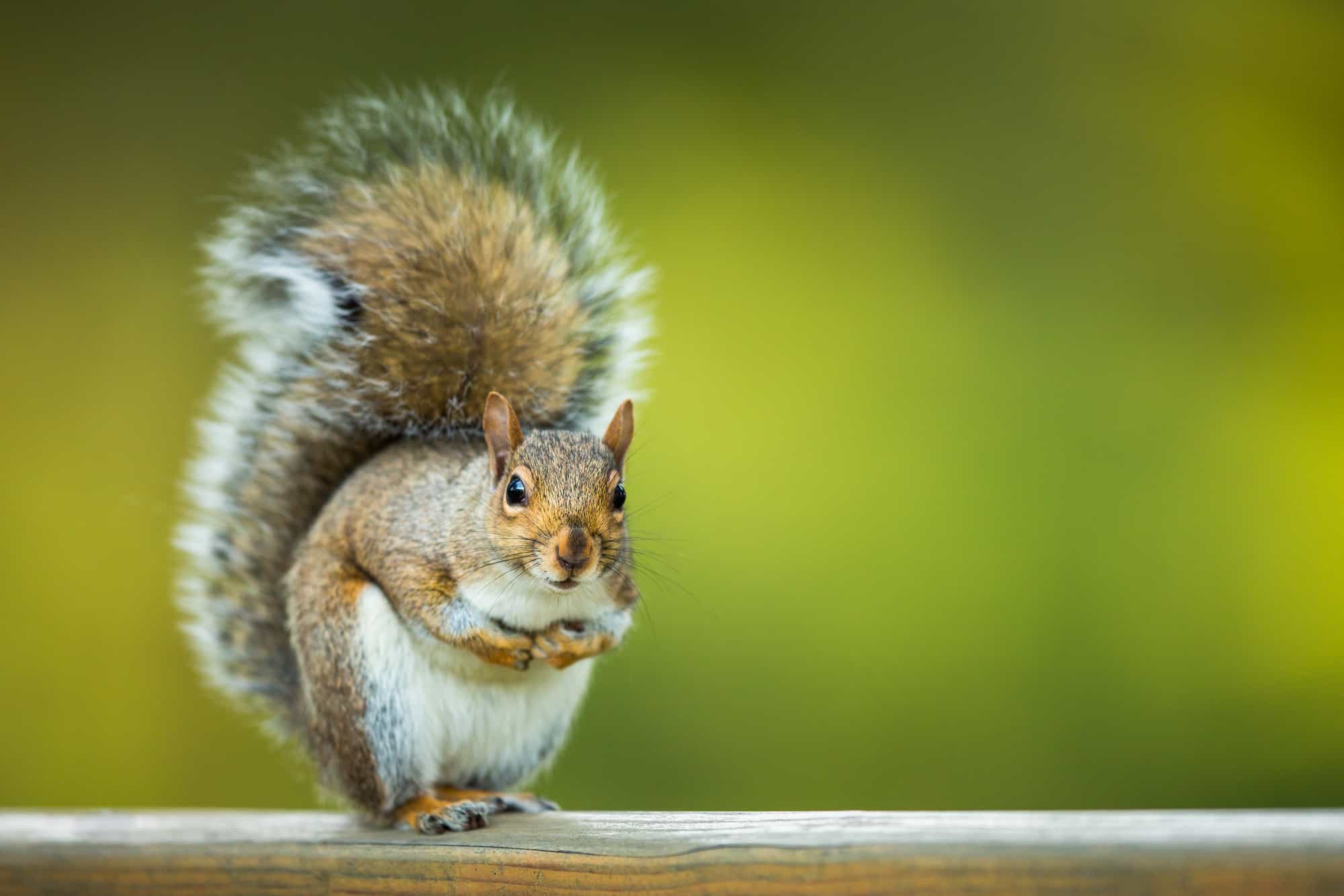
- fox squirrel (S. niger),
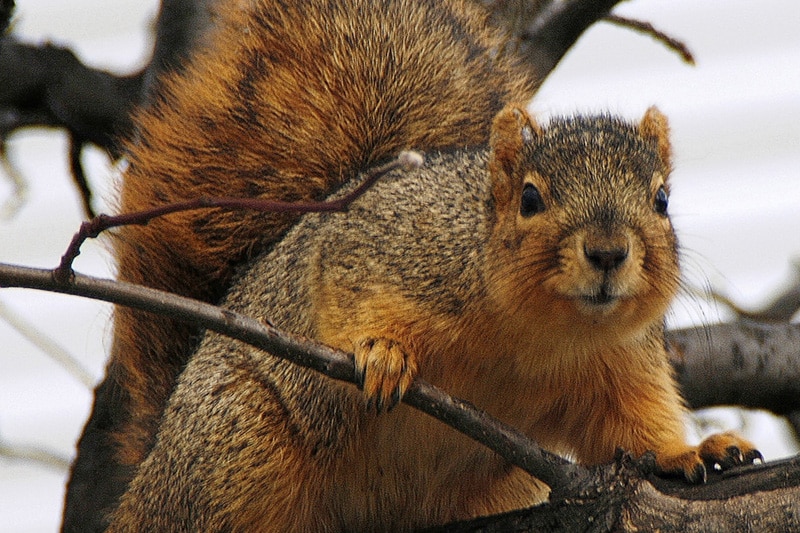
- red squirrel (Tamiascirus hudsonicus)
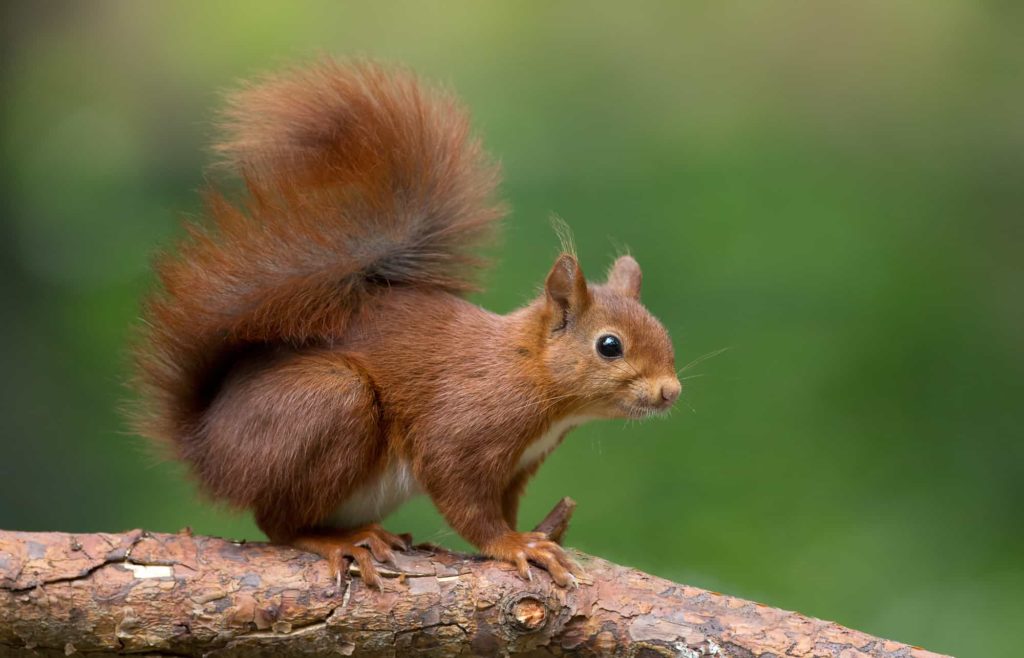
- flying squirrels (Glaucomys sabrinus and G. volans).

Each of these squirrel species have unique attributes and important behavioral differences, but this article will discuss a general framework for controlling squirrels in buildings.
When squirrels relocate into the safety of your attic, they chew through nearby materials, release fecal matter and urine, and cause odor and risk of disease. In short, squirrels should be removed from your attic space and prevented from being able to return.
Squirrels are Rodents
Squirrels are rodents. Just like rats and mice, squirrels must chew continually to keep their teeth from becoming too large. To gain access to your attic, squirrels can find a small hole and chew around it to make it large enough for entry and exit. Once inside, they chew electrical wiring, PVC pipe, the wood on rafters, and anything else that may be in storage in the attic. Squirrels will tear apart the attic insulation to create nests, and urinate and defecate throughout the attic. Sometimes baby squirrels may fall down wall voids and die, causing extreme odors and fly infestations. Squirrels, and their excrement are known to carry diseases such as Leptospirosis, Lyme Disease, Salmonellosis, Tularemia, and rarely Rabies.
There have been stories of families that go on vacation and squirrels gain access to the living areas. Inside your home, they will pull the stuffing out of couches and chairs, chew on your dining room chairs, and generally destroy your home.
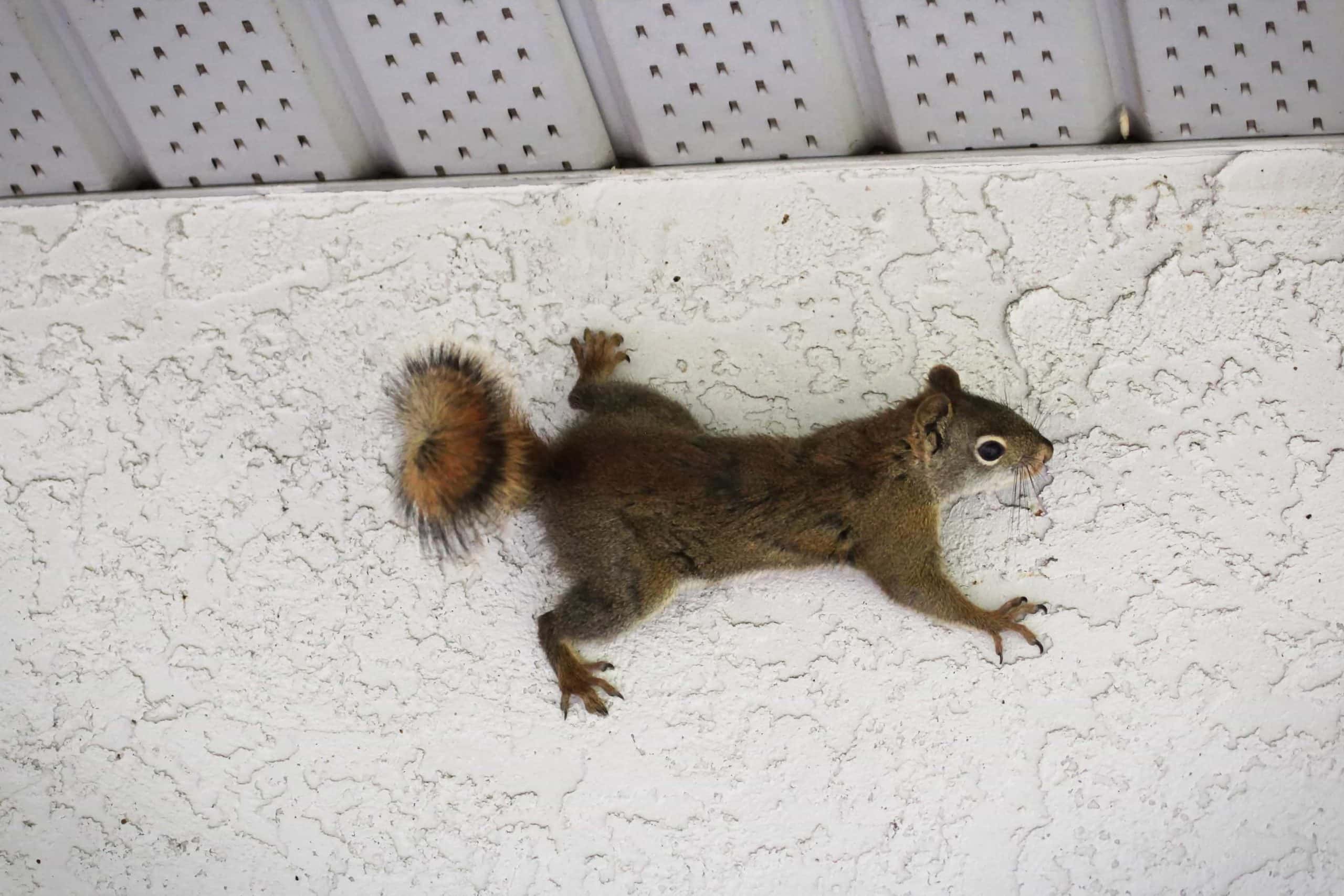
The most dangerous aspect of squirrels inside your home, is the likelihood that they will chew electrical wiring. These damaged wires create a substantial risk of fire. It is believed that many household fires are caused by squirrels and other rodents damaging electrical wires.
Is it a Squirrel in My Attic?
There are many animals that may gain access to your attic and use it as a safe location to give birth and rear their young. It is important to identify the species of animal so that it can be appropriately dealt with. The scratching and clawing noises you hear may be a rat or mouse, racoon, opossum, or of course squirrels. Sometimes you stand outside and watch the critter enter your home, other times you have to get up into the attic and have a look around. Even if you do not locate the animals in the attic, you will likely find the evidence of the animal.
Squirrel Poop
The number of squirrels found in an attic varies. In the springtime when babies are born, you may find between 5-8 gray squirrels. Flying squirrels are usually found in higher numbers. It is not unusual to find 8-12 flying squirrels in one nesting location. As the number of squirrels in the attic increases, the amount of squirrel poop increases.
Squirrel droppings can easily be confused with rat droppings. Squirrel droppings can vary by species, but are approximately 3/8” in length and 1/8” in diameter. They are dark brown when they are fresh and lighten with age. They are rounded on the ends and slightly bulging in the middle. Some species have round “rabbit-like” droppings. Some species also have “latrine behavior” where they will only deficate in a dedicated area. This means you may not find droppings spread across your attic like you would with other rodents. Squirrel fecal matter should be treated with care as it may carry disease and bacteria. After the squirrels have been removed, the droppings should be cleaned up and the area disinfected.
Squirrel Nests
If you have squirrels in your attic, you probably have baby squirrels in there as well. Mother squirrels seek out safe shelter to give birth and nurse their young. Squirrels gather up soft material to make a nest. They may tear apart the insulation in your attic, or they may bring in nesting materials from outside. Either way, squirrel nests with helpless babies in them, must be taken into account when coming up with a plan.
Baby squirrels are dependent upon their mothers for about 6 weeks after their birth. If you trap the mother and seal up the entry hole, the babies will die. This is not only cruel, but it will also cause extreme odor and insects to aid in the decomposition process. You must either wait until the babies are able to leave the nest on their own, or crawl up to the attic, locate the nest, and remove the babies by hand.
Sounds of Squirrels
Squirrels are not loud lumbering animals in the attic like racoons, but they make a ruckus in their own way! Squirrels are diurnal, or active in the daytime. Early morning is the time of day you will most likely hear squirrel activity from your attic. You may hear scratching, running, climbing, or clawing noises as the baby squirrels become more active.
Squirrels can be quite vocal as well. They squeak, grunt, chirp, and make barking sounds. When baby squirrels need attention, they make loud high pitch chirping sounds.
Trapping Squirrels

Before taking any action against squirrels, always check with your state and local officials regarding any restrictions. The laws regarding squirrel removal vary from state to state. For example, in New York State, gray and fox squirrels are classified as protected game animals, while red and flying squirrels are unprotected. Your local extension officer can guide you on any such restrictions in your area. In addition, figure out what you are going to do with the trapped squirrels. Find out if your state allows for relocation, or if the animal must be humanely euthanized. Your local extension office can answer these questions as well.
Trapping squirrels can be humanely and effectively accomplished. Squirrel traps are easily available online and in home improvement stores. Some people attempt to trap squirrels in the attic, but many find it more effective to place the trap outside the attic. Place your trap along the path of known foraging activity or anywhere you see squirrel activity. Most professional wildlife trappers have their favorite concoctions they use for bait, but for squirrels, try the following: peanut butter, crackers soaked in walnut or another nut oil, sunflower seeds, nuts, cereals, shelled corn, or bread soaked in almond extract. You can even place a few free seeds outside the trap to entice them to enter the trap.
Another effective squirrel eviction measure is installing a one-way door on the entry hole. Once properly installed this device allows the squirrels to leave the attic, but not to get back in. This is only effective if there is only one access point. A benefit of a one-way door is you do not have to handle a trapped squirrel. To be successful, one-way doors often need to be combined with preventative exclusion on other vulnerable sites on the building. In addition, if a mama squirrel is kept out by a one way door, and her babies are trapped inside, she can cause extensive damage to the exterior of the building trying to get in to save her young.
Whatever method of removing the squirrels you choose, remember to think about the young. If you trap a nursing mother squirrel, you must go find the babies. Many people choose to wait 6 weeks until the babies are leaving the attic on their own, before taking action against squirrels.
Squirrel Bait
When battling squirrels, many people would prefer to simply poison the squirrels rather than deal with trapping. However, there are no rodenticides or other poisons legally registered for tree squirrel control in buildings. To use any rodenticide or insecticide in a manner that is inconsistent with its label is a violation of federal law. In addition, if you toss bait into the attic and the squirrel dies in the attic, the odor will emanate throughout your home for days. Baiting squirrels is not a viable option.
Prevent Squirrels – Seal Your Home
Once the squirrels are out of the attic, and any baby squirrels have been removed, you must seal the entry hole. Squirrels are prolific chewers. When sealing potential squirrel access points, think metal, as squirrels can chew through most other building materials. Squirrels can fit through gaps the size of a quarter. When looking for areas that squirrels may use to access your home, be sure to check, attic and roof vents, roof edges, soffits, gable vents, and chimneys. By thoroughly sealing your home, you may prevent future squirrels from nesting inside, as well as racoons, bats, opossums, and rats. Sealing your home with rodent proof material is a worthwhile investment, that may save you future sleepless nights.
Although a variety of repellents and devices make marketing claims about driving squirrels from buildings, their efficacy is very questionable.







